This is a KMZ Narciss (Нарцисс), a 16mm sub-miniature SLR camera produced by Krasnogorsky Mekhanichesky Zavod in Krasnogorsk, Russia between the years of 1961 and 1965. The Narciss produces 14mm x 21mm exposures on unperforated 16mm film loaded into specialized cassettes made specifically for the Narciss. Despite it’s diminutive size, it is a fully functional professional camera with an interchangeable lens mount and interchangeable viewfinders, a focal plane shutter, and a full selection of available shutter speeds. The camera was originally produced for medical and scientific use, but it later caught on with regular photographers as well.
Film Type: 16mm Unperforated Bulk Film Loaded in Narciss Specific Cassettes, Shoots 14mm x 21mm exposures
Lens: 35mm f/2.8 Vega (ВЕГА) M-1 Coated 5-elements
Lens Mount: M24 Screw Mount (An M24 -> M39 Adapter was sold with the camera)
Focus: 0.5 meters to Infinity
Viewfinder: Interchangeable SLR Pentaprism
Shutter: Cloth Focal Plane
Speeds: B, 1/2 – 1/500 seconds
Exposure Meter: None
Battery: None
Flash Mount: PC Port M and X Flash Sync
Weight: 340 grams (w/ lens), 290 grams (body only)
Manual (in Russian): https://mikeeckman.com/media/KMZNarcissManual.pdf
Manual (translated to English): http://www.zenitcamera.com/mans/narciss/narciss.html
How these ratings work |
The KMZ Narciss is a really cool little camera that despite it’s diminutive size, offers nearly all of the features of much larger professional 35mm cameras. I found the use of this camera to be quite enjoyable and I was amazed at the sharpness and quality of images I got on 16mm micro film that I hand rolled into the camera. These cameras are not easy to find, but may be worth seeking out for a collector who wants something different. I know I do! | ||||||
| Images | Handling | Features | Viewfinder | Feel & Beauty | History | Age | |
| 2 | 2 | 1 | 1 | 2 | 1 | 20% | |
| Bonus | +1 for uniqueness, its the only camera of it’s kind ever made | ||||||
| Final Score | 11.8 | ||||||
History
The problem with SLRs (assuming you think this is a problem) is that they’re often large. When the first SLRs hit the market in the 1930s, there were a number of reasons that professional photographers did not jump at the chance to replace their current camera system.
When compared to popular rangefinders of the 1950s and 60s, most SLRs with their large pentaprisms viewfinders, protruding mirror boxes, and wide bodies were a turn off to people who preferred compact and discreet models.
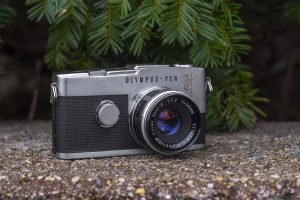
Not every SLR is big however, as some companies like Olympus managed to squeeze in a fully functioning SLR into a compact body with the Olympus OM-1 (originally called the M-1). As long as a 24x36mm image wasn’t a requirement, you could go even smaller than the OM-1 with the Olympus Pen F SLR, a fully functioning half frame SLR that shot 18x24mm images on regular 35mm film. How did they manage to squeeze in an entire pentaprism and mirror box into such a small body? They turned it on it’s side.
But was the Pen F the smallest SLR? Could it get smaller? What if you used a film stock smaller than 35mm film, like 16mm? How small could it be?
Well lucky for us, the R&D department at KMZ in the late 1950s decided to build an all new, fully functional SLR camera that would shoot 14x21mm images on specially loaded unperforated 16mm film. The camera would be called Нарцисс or Narciss in English which likely is short for Narcissus which is a type of daffodil or the name of a famous hunter in Greek mythology. Soviet optical companies liked using names inspired by Greek mythology such as Jupiter and Helios, so the second explanation is likely correct.

Although the Soviet Union had a rich optical history dating back to the early 20th century, the quality of their early film and optics were generally a step behind the rest of the world. After World War II, medium format cameras were still very popular with 35mm cameras reserved only for the professionals. Many inexpensive plastic children’s cameras were produced during this time that still used 120 format film as it was cheap to make, and made images with sufficient quality that cheap contact prints could be made.
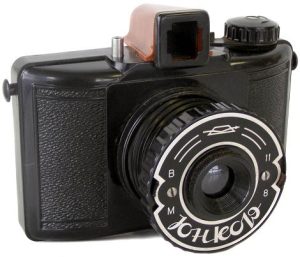
By the 1960s however, the quality of life in the Soviet Union was improving, as was the quality of cameras and other optical products, so the need to make more and more advanced 35mm cameras grew. Some people thought that if smaller 35mm cameras could exceed the quality of larger medium format cameras from a few years prior, would the same thing happen with cameras smaller than 35mm? Perhaps one day 16mm cameras would have the sharpness and resolution of 35mm cameras and become the preferred format of the professional.
Not willing to find out the answer to that question, in 1959 KMZ released a prototype 16mm SLR for use in the medical and scientific community. The camera would be a full system camera with interchangeable lenses and viewfinders. It would have a flash synchronized focal plane shutter with a full range of shutter speeds. The camera, was the Narciss.
Although a very small number of chrome and white prototypes exist that are believed to have been made in 1959, the camera would not go into wide scale production until 1961.
Since the general public was not yet used to seeing a 16mm SLR, initial demand for the camera was very small. The earliest examples were produced for the medical and scientific communities. It was thought that the camera’s extremely compact size would be useful in situations where a high quality camera was needed, but not a lot of space was available.
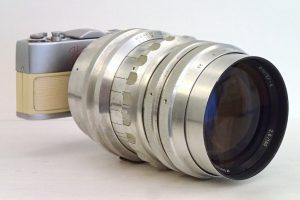
The Narciss came with it’s own M24 screw mount, but adapters came with the camera to allow M39x1 lenses to be used with sometimes hilarious results such as in the image to the right showing a Narciss with a Jupiter 6 attached. This meant that upon it’s release, a huge number of rangefinder screw mount lenses could be used in an SLR, making the Narciss one of the only film SLRs ever made that can use rangefinder lenses without any sort of modification.
The standard lens on early models was an Industar-60 35mm f/3.5 lens, but was later replaced with the Vega (ВЕГА) M-1 35mm f/2.8. Both of these lenses have an equivalent focal length of ~60mm on a full frame 35mm camera. In addition to these two lenses, three more lenses were planned to be made in the M24 mount and may exist as prototypes, but there is not enough evidence to know for sure if they ever went on sale. They were:
- Mir-5 28mm f/2 (~48mm equivalent)
- Mir-6 28mm f/2.8 (~48mm equivalent)
- Jupiter-17 50mm f/2 (~86mm equivalent)
No wide angles or true telephoto lenses were ever made, although ones could be adapted using the M24 -> M39 adapter.
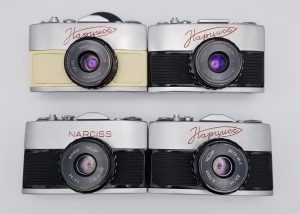
There were a few variations of the Narciss. Early examples were created specifically for scientific use and had a different viewfinder. Regular production cameras came with a removable pentaprism with chrome body and black or ivory white body covering, and finally, export versions labeled in English as NARCISS were available in black bodies only. There was one more variant with a gray body, but these are extremely rare.
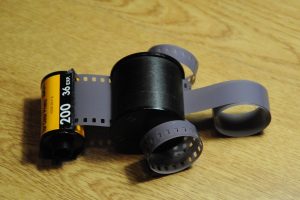
Eventually the camera did go on sale to the general public, but it was poorly received. For one, the camera was quite expensive putting it out of the range of most photographers, but also, 16mm film was not widely available in the Soviet Union, so people had to resort to cutting 35mm film by stripping off the sprockets to get a 16mm strip and loading it into the cassette themselves. Not only was this time consuming, but it had to be done in complete darkness, something the average consumer wasn’t willing to do.
A rumor exists that KMZ was ready to give up on the camera pretty quickly after it’s introduction, but somehow it had attracted some attention outside of the Soviet Union, so production was extended to allow for export models to be made. Later Narciss cameras have a “Narciss” logo in western script upon the front plate of the camera.
Production eventually ended in 1965, with a total 10,939 ever made. A Narciss-2 prototype was made but never went on sale. The most obvious change was a non-removable pentaprism viewfinder, but some sites suggest that improvements to the film transport were made as well.
For most people outside of the Soviet Union, the Narciss was largely a forgotten camera. Although a few companies like Pentax and Minolta did experiment with 16mm SLRs, they used 110 format film, rather than bulk film loaded into proprietary cassettes. The Narciss eventually got some attention in February 1993 when Amateur Photographer ran a two page article about the camera, introducing it to many in the west for the first time.
It has now been over 25 years since the above article was published and the Narciss has largely been forgotten again by most western collectors. For Soviet collectors, it remains a sought after item for it’s uniqueness and rarity. With barely over 10,000 ever made, they’re not easy to come by today, especially not in working order.
I probably don’t need to say this, but this is a cool camera that’s worth an addition to any collection, whether you specialize in Soviet cameras or not as there simply was never anything else like it made by anyone.
My Thoughts
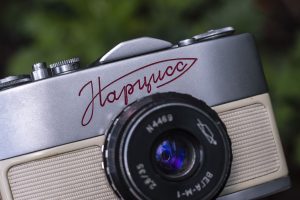
Like most non Soviet collectors, I had never heard of the Narciss until visiting my friend Vladislav Kern of ussrphoto.com and he showed one to me. Not even realizing that it was an SLR at first, I thought the ivory white body covering was cool. After handling it for a minute and seeing that the shutter worked, I asked if I could borrow it.
If it’s not obvious yet, the Narciss is very small, even smaller than a Rollei 35S. The body weighs 290 grams by itself and with the Vega lens, only weighs in at 340 grams. That’s point and shoot territory there, but in an all metal body. It’s too bad that 16mm film isn’t more readily available as the portability of this camera would allow for a great street shooter or “glove box camera” that you could keep with you at all times for spontaneous photography.
Another thing I really like about it is that despite it’s diminutive size, KMZ designed it in a way where every control is where you’d expect it to be like if it were a full size SLR. The rapid wind lever is on the top right side of the camera, there’s a normal shutter speed dial next to it, and the lens has a pretty ordinary focus and aperture ring. Everything is just smaller.
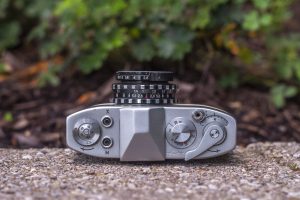
Starting from left to right is the film rewind knob that also doubles as a film reminder dial. To use rewind dial, you must first press a release on the bottom of the camera and it will pop up. Engraved around the center are GOST film speeds and around the edge, three icons indicating what kind of film you have. The GOST scale uses an arithmetic numbering system which was similar to the ASA scale, differing only by a factor of 0.1 so for example, GOST 90 is the same as ASA 100, 180 is 200, and so on. Since this isn’t coupled in any way to a meter, you could just set it to whatever you want.
Next to the reminder are two PC flash sync ports, one for M, and one for X. I was unable to find any documentation for what speeds the shutter is synced at, but if it’s like most 1960s SLRs with focal plane shutters, X-sync is probably at 1/30 and M-sync at all speeds.
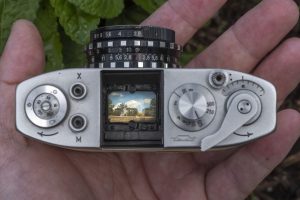
In the center is the removable viewfinder. There is no release for it, simply pull back and it will slide off revealing the focusing screen. As best as I can tell, no waist level finders were officially offered for the Narciss, but the focusing screen is sufficiently recessed into the camera so as to allow the body of the camera to shield most light from it allowing you to use it at chest level without any issues.
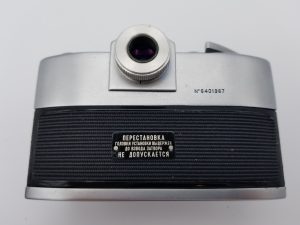
Next is the shutter speed dial with speeds from 2 to 500 plus Bulb. On the Narciss, you MUST first cock the shutter before changing speeds, or else you risk damaging the camera. Apparently KMZ felt unusually strong about this compared to other Soviet cameras as some examples had a plate on the back door warning you never to change speeds without first cocking the shutter. The image to the left shows one such camera with the warning. This requirement exists regardless if the warning is there or not.
Finally we have the cable threaded shutter release button, rapid film advance lever, and exposure counter. The counter is additive and must be manually reset after loading each new roll. To reset the counter, grip the knurled ring beneath the wind lever and rotate it until the number 0 is displayed.
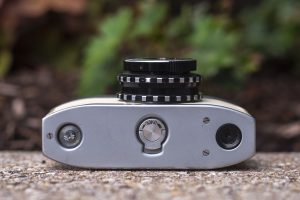
The bottom of the camera has a rewind release button on the left which pops up the rewind knob on the top of the camera for when you reach the end of the roll of film. In the center is the lock for accessing the film compartment, and on the right a 3/8″ European style tripod socket. If you wanted to mount the Narciss onto a 1/4″ tripod, you’d have to use an adapter.
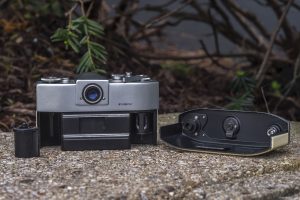
With the back off the camera, you’ll see that the Narciss has a surprisingly ’35mm-like’ film compartment, just smaller including the 14mm x 21mm opening. Film loads in a cassette on the left and stretches across a film gate onto a fixed take up spool on the right.
Although I do believe that Narciss cassettes were available pre-loaded back when this camera was new, most people reloaded them on their own. While loading the cassette isn’t hard, I does require access to a dark room in order to cut the film to the correct length and wind it up around the supply spool before loading it into the camera.
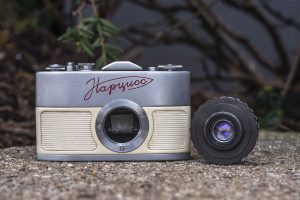
Being a screw mount camera, the Vega lens screws out just as you’d expect. I feel like a broken record saying this, but the lens mount looks like a normal 35mm camera’s screw mount, just smaller.
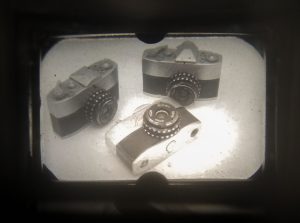
The Narciss, being an SLR has a viewfinder that allows you to compose images through the viewfinder, but being a 16mm camera, I found it really neat to be able to precisely focus my images on such a small film. The viewfinder is basic, showing nothing about the settings of the camera, and there are no focus aides like a microprism circle or split image rangefinder, but the ground glass screen is surprisingly bright and easy to compose with. My experience with other 16mm based SLRs hasn’t exactly been positive, so for such a small camera, the Narciss viewfinder is quite capable.
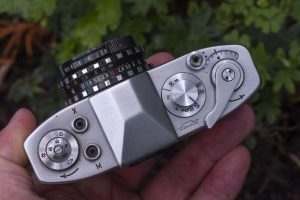
The Narciss is a really cool camera. I think that had more companies developed 16mm SLRs with a similar feature set of the Narciss, this whole market segment could have produced some really cool cameras. Even without shooting it, the Narciss is a sight to behold. It’s so tiny! While I don’t know that I’d want this ever to be my primary camera, it’s portability allows it to be used in situations that a large and heavy Zenit or Nikkormat wouldn’t.
Even without a good supply of 16mm film today, respooling 16mm microfilm into this camera isn’t that hard and at least gives a collector the chance of shooting one. Hmm, can you think of anyone who might do something like that?
My Results
For my one and only roll of film through the Narciss, I took a 100 foot roll of ACS Datalink Plus 16mm microfilm and in a dark room, cut it down to a length that fit into the Narciss cassette. It took me a couple of tries fumbling in the dark to get the film loaded, but I eventually got it. I was told this film shoots at about ASA 25, so I was sure to keep the lens mostly wide open in well lit areas.
Having never shot or developed the ACS Datalink film before, I decided to develop it using HC-110 in Dilution B for 6.5 minutes like I do pretty much every other black and while film and upon loading the tank and seeing a strip of mostly perfectly exposed images, I was elated.
I said “mostly” as the shutter clearly had some issues and either didn’t fire, or stayed open too long on about a third of the roll, but of the images that were exposed correctly, they all looked wonderful!
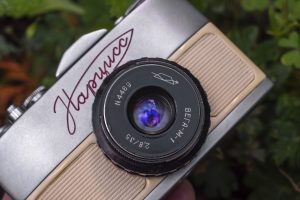
I use an Epson V550 scanner for all of my film which doesn’t have a film holder for 16mm film, so I took two glass plates from a picture frame, and sandwiched the film in between the two and laid the glass directly onto the glass table of the scanner and everything scanned as you see here.
I was amazed as the detail and sharpness of both the Vega lens and the Datalink film. If you click on any of the images in the gallery above and view the full resolution versions, I doubt many people would know that this wasn’t 35mm film. I would be very curious to see what this lens is capable of if adapted to a modern digital camera.
KMZ was definitely onto something when they developed this camera thinking that if 35mm was an improvement over 120, that one day 16mm might be an improvement over 35mm. High quality 16mm film wasn’t easy to come by back then, but had the camera system taken off and more emulsions come available, I bet the Narciss would have been just one of many similar 16mm SLRs.
This is a neat camera. As mentioned earlier, other companies like Minolta and Pentax made 16mm SLRs, but they don’t exactly look like a classic camera. The Narciss looks like someone took a shrink ray to a normal 35mm SLR and that’s one of my favorite features about it.
This one had some shutter issues and they’re hard to come by, but it will take a lot of effort to resist one if I ever have the opportunity to buy a good working example in the future.
Related Posts You Might Enjoy
External Links
https://en.wikipedia.org/wiki/Narciss_camera
http://www.zenitcamera.com/archive/narciss/index.html (in Russian)
http://fotoussr.ru/cameras/narciss/ (in Russian)


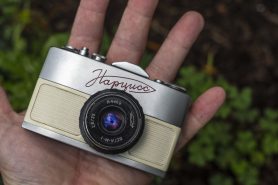
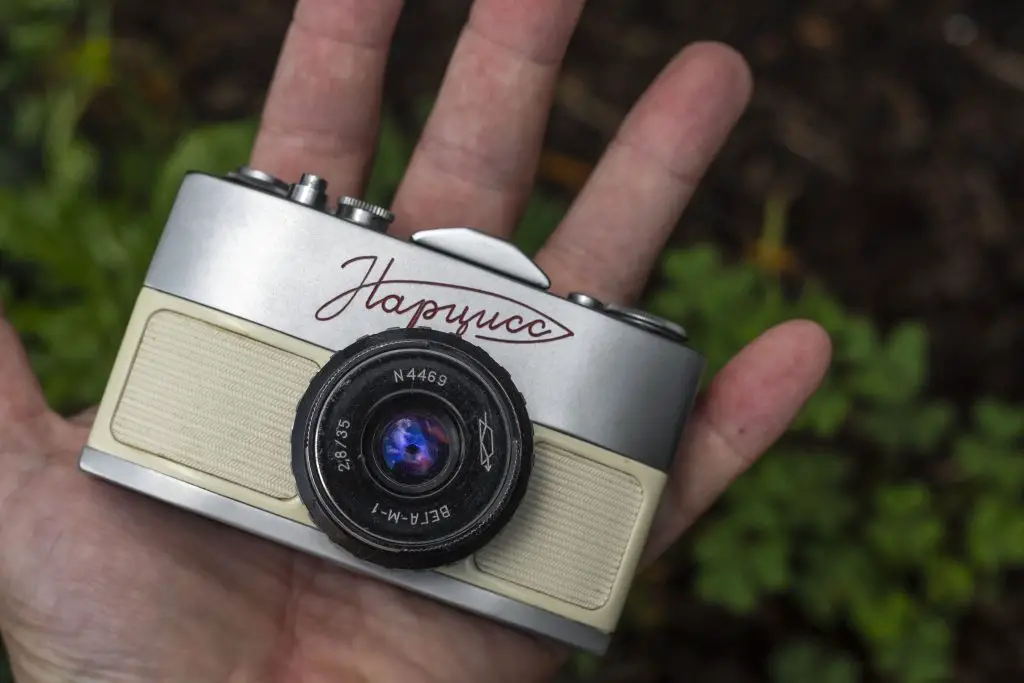
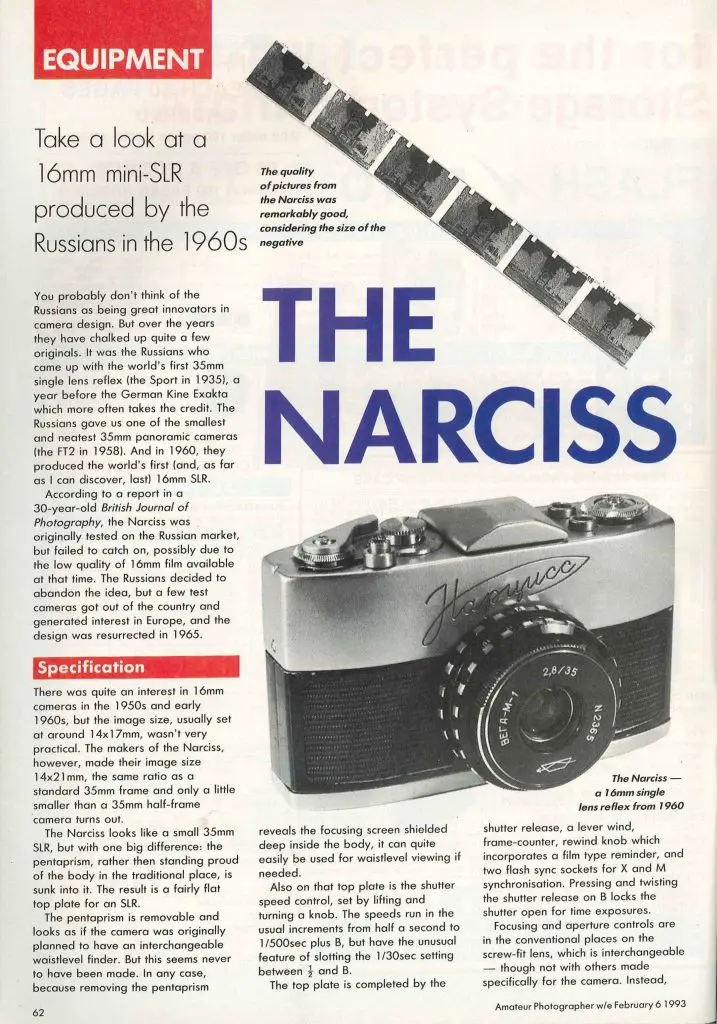
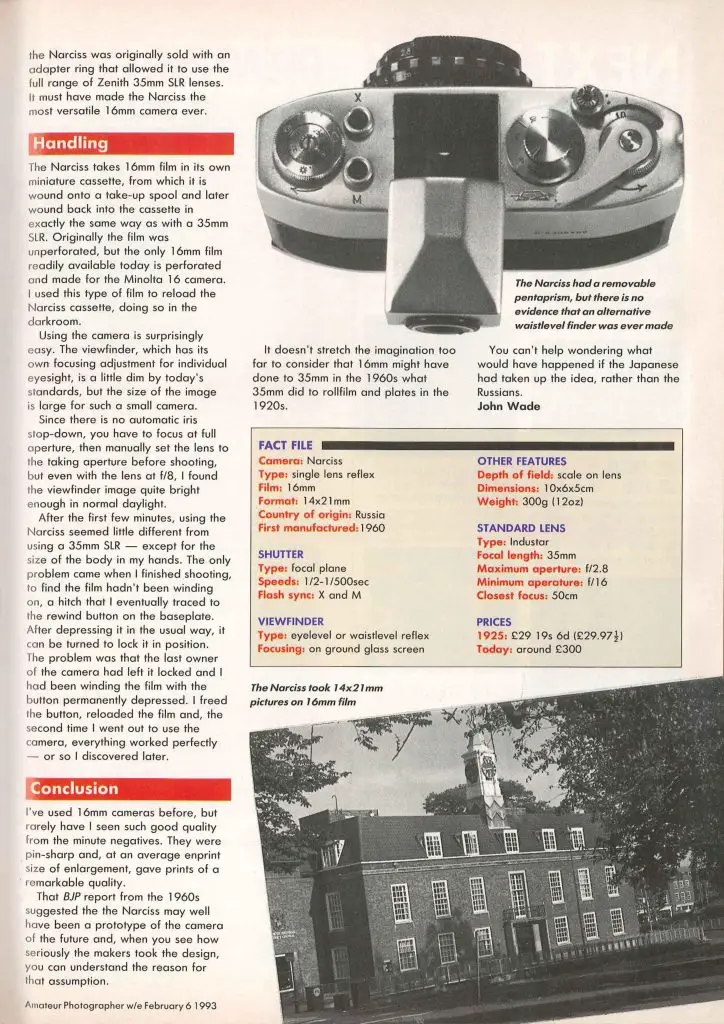
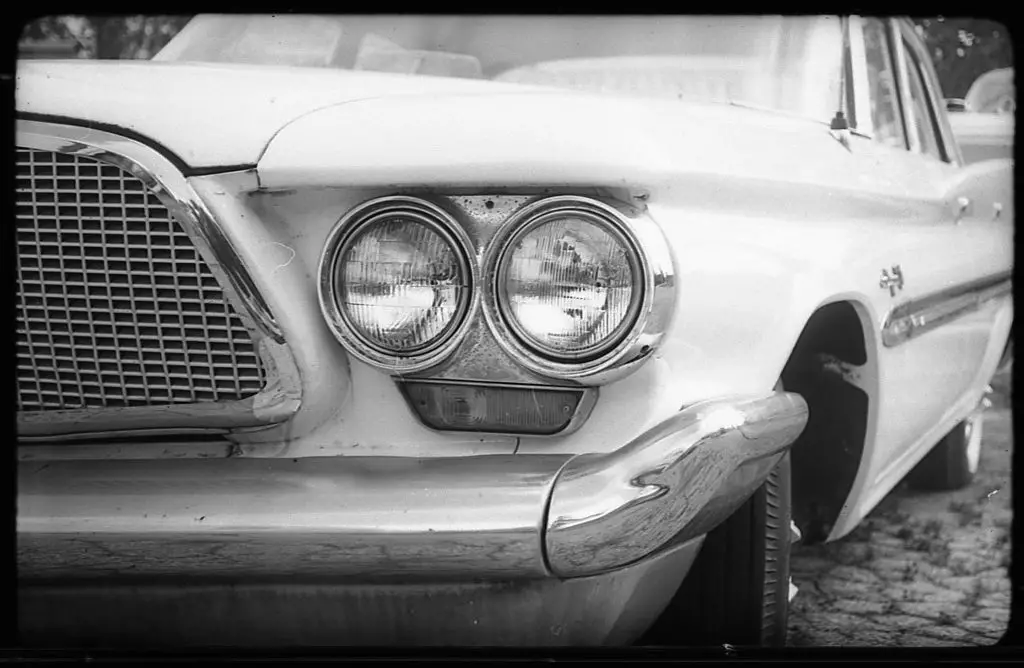
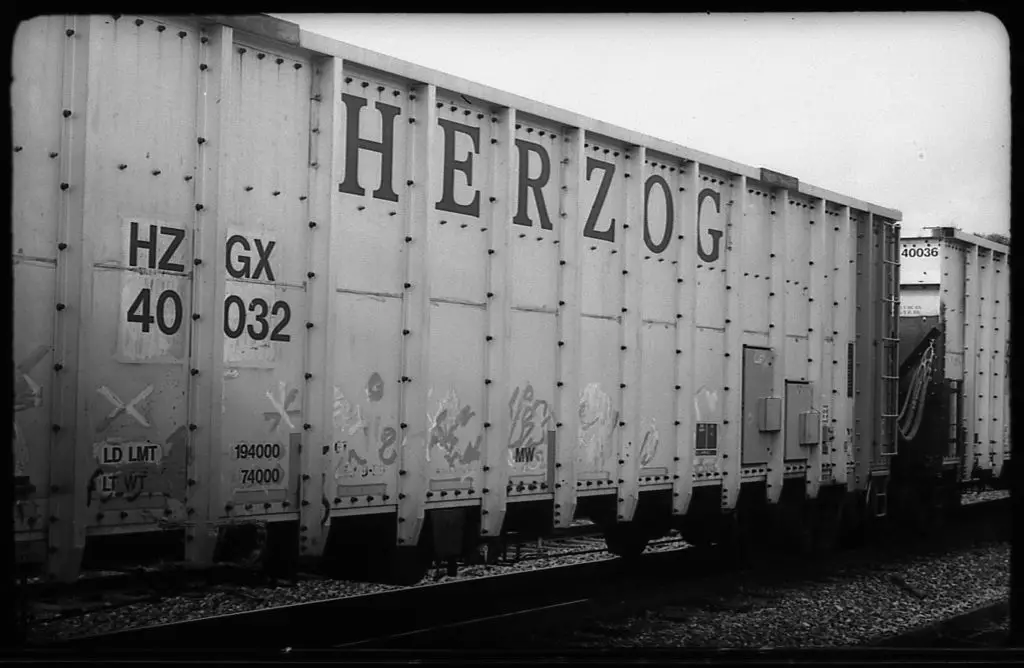

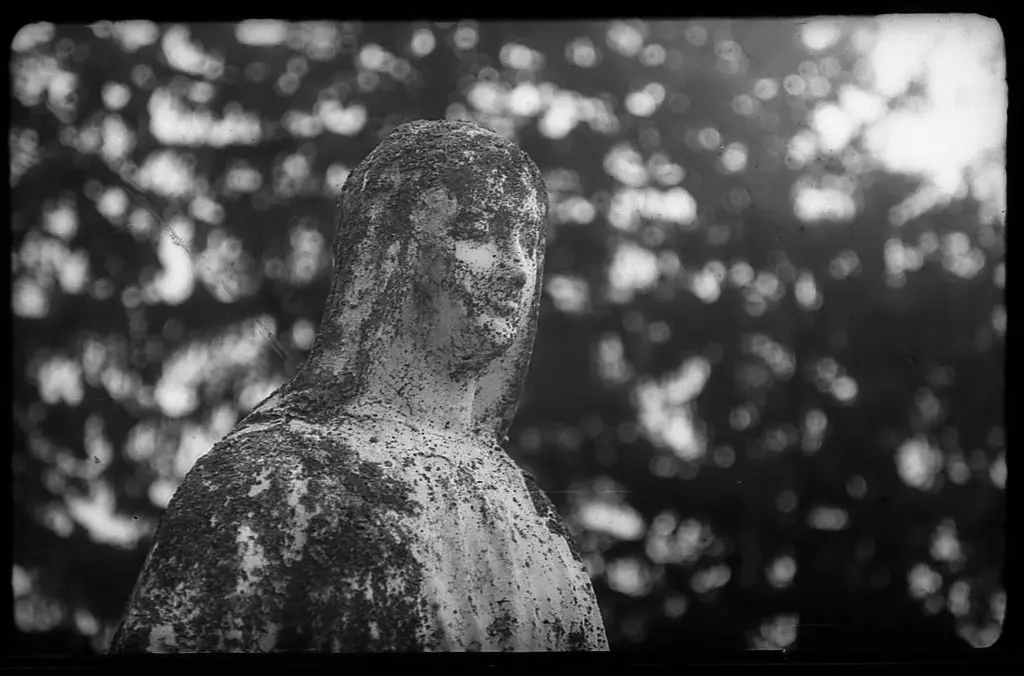
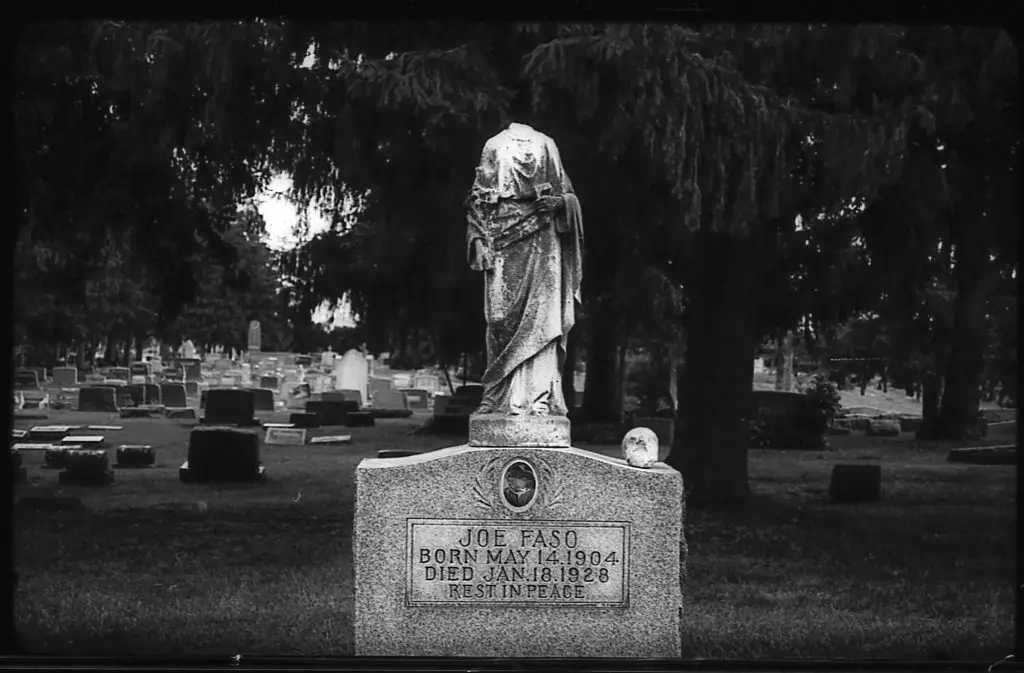
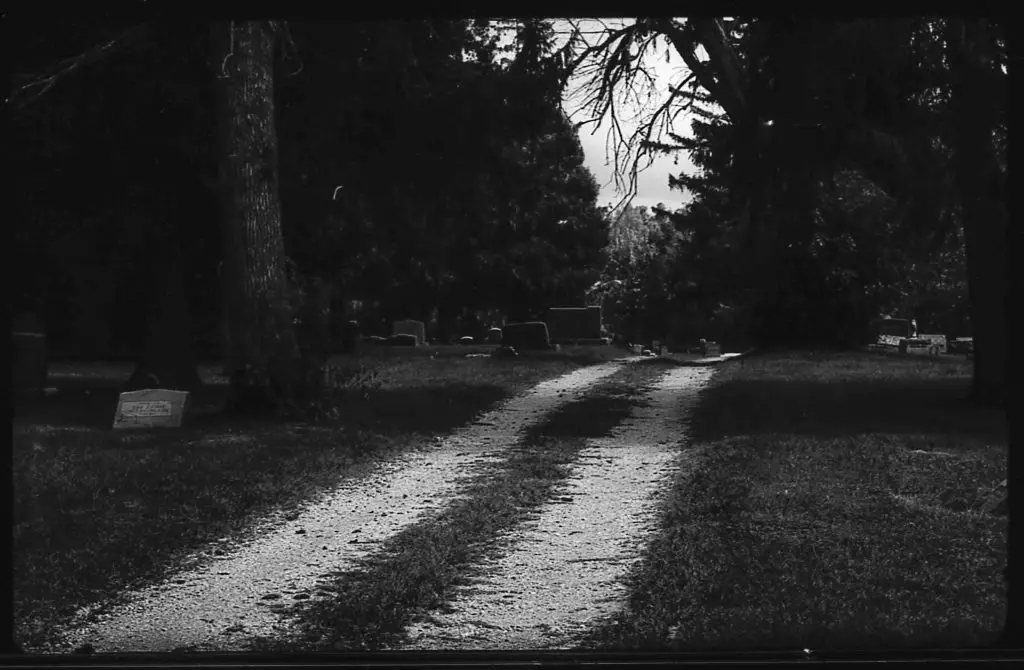


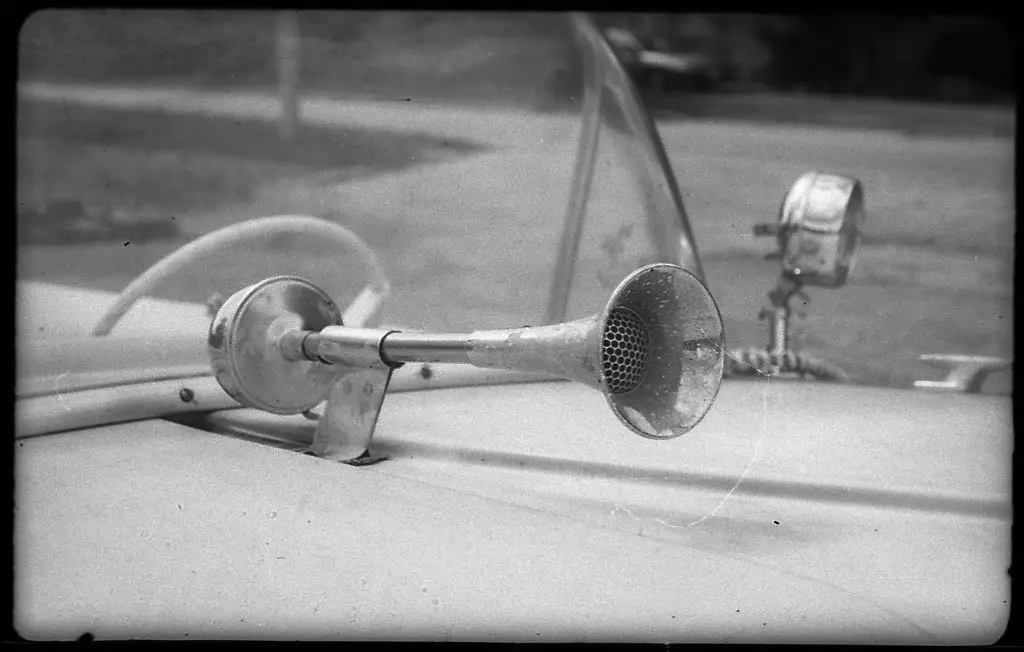
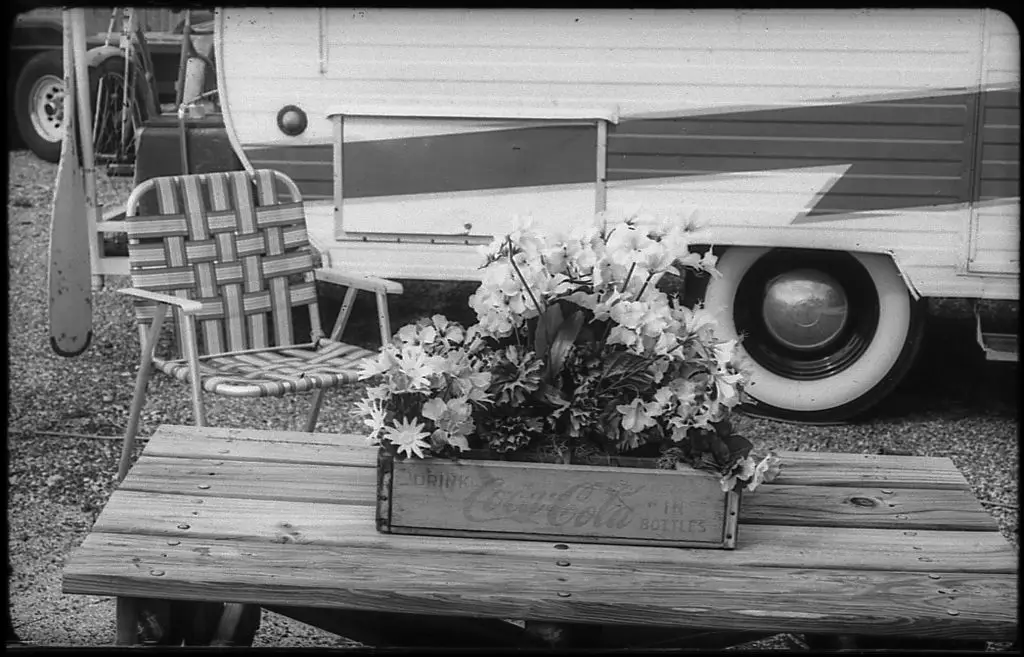
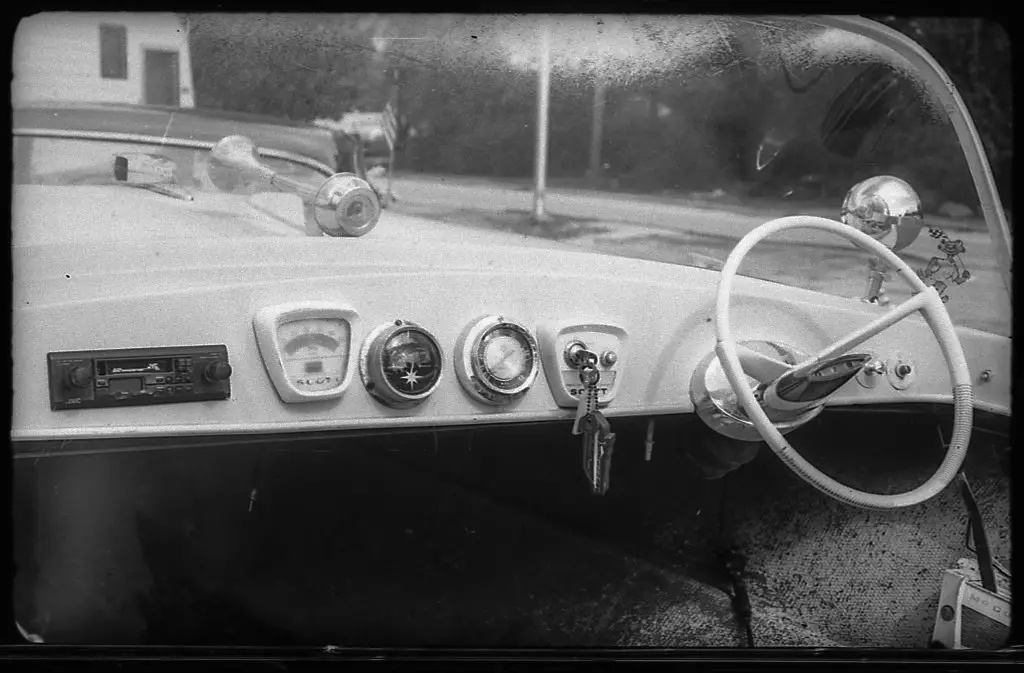
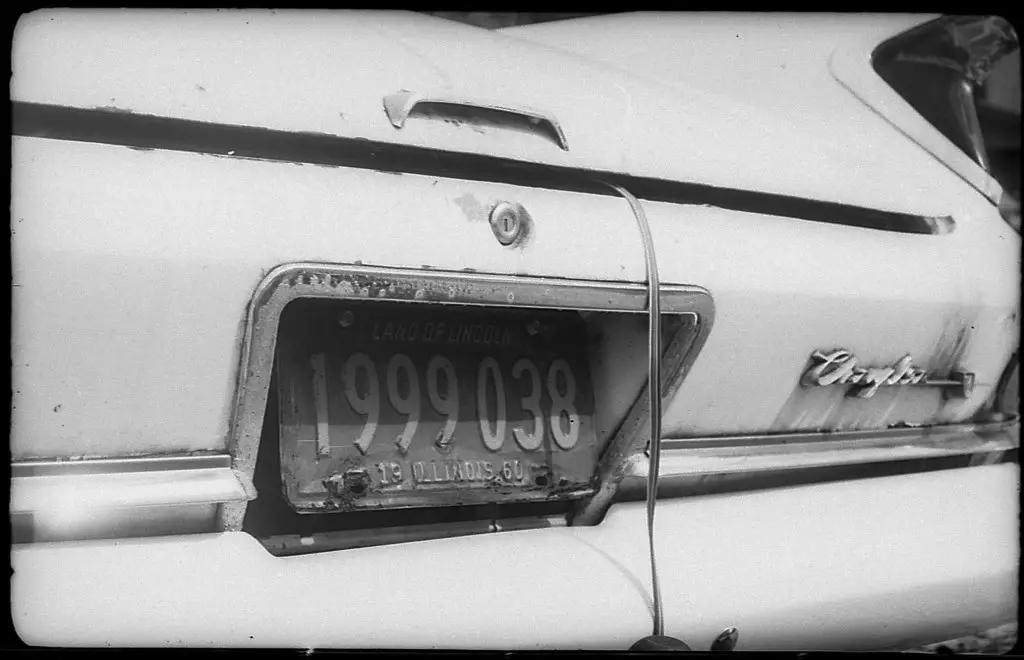
Those are the best results I’ve ever seen from 16mm film.
Yeah, if I didn’t shoot, develop, and scan them myself, I don’t know that I would have believed it! That Vega lens is incredibly sharp and the microfilm likely helped too, as it’s a low grain, high contrast film, designed for archiving text.
Great article and superb images!
I just did a quick price-check on ebay, and ….it’ll be a while before I save up enough pennies for this one!
Me too. I am only able to review cameras like these through the trust and generosity of other collectors who let me borrow them!
And I should have said first, great article about an extremely cool camera. The images it gave you especially have me excited.
Hi Mike,
While I await delivery of my first Narciss, I’d really like to know more about the neat 16mm film slitter you’ve pictured. And for those others who denigrate 16mm and 110 cameras, they’re missing a lot of fun. And that’s good for keeping the camera prices low (save for the Narciss, of course!).\Regards/73
Terry
Terry, the one pictured in the article is just an image of one I found on eBay back when this article was posted. I just took a quick look there and don’t see anything at the moment, but I am sure they pop up now and then. I didn’t slice my own 16mm, instead used some unperforated 16mm microfilm made by a company called ACS Datalink. I picked up a 100′ spool of it some years ago and it works fine in cameras like this. You need to cut strips of it and load it in darkness, of course, and it’s very high in contrast, but as you can see, the results are nice.
Well, I have never thought I would have one on my own. I liked Narciss very much but they are quite expensive. On the other hand I see that once I like one camera very much, at the end of the day it finds a way to my hands. : ) So a week ago I bought one which was broken. One needs to remember to change speeds only once the shutter is cocked. It was forgotten in this case so shutter curtains were damaged. Fortunately they worked as a kind of fuse, preventing other mechanisms from damage. I have some experience in repairing soviet cameras so at the first glance mechanisms looked like Zorki’s. They were just so little : ) All works perfect now. The only thing i dislike is the way the mirror is lifted. It causes lack of “smooth feeling” diring cocking the shutter. All in all it is quite interesting camera. I am looking forward to see first pictures out of it.
Congrats on the Narciss! You are lucky to have a working one as most don’t. Even the one I used for this review was unreliable and often wouldn’t fire the shutter. I wasted a lot of film getting the images I did get, although I am still happy at having the experience at all.